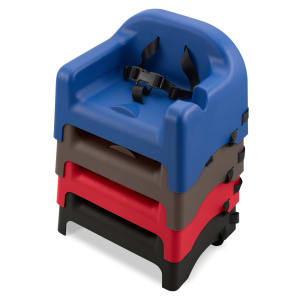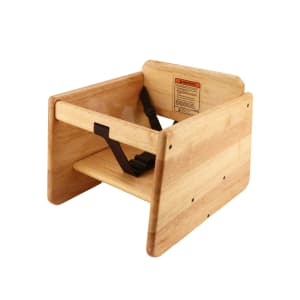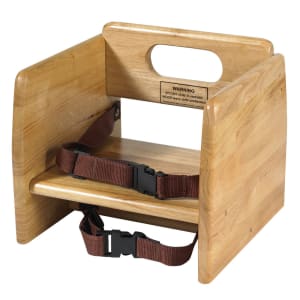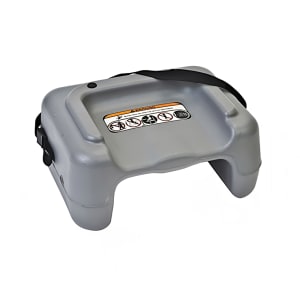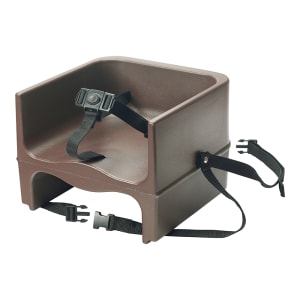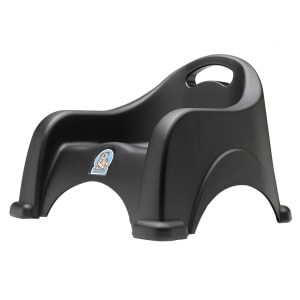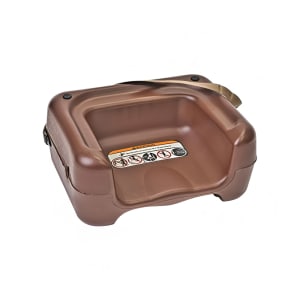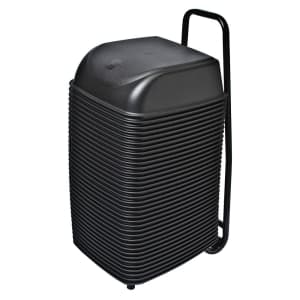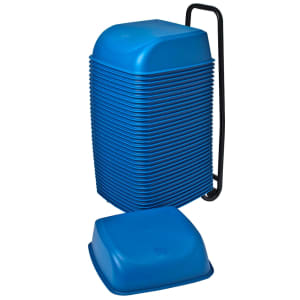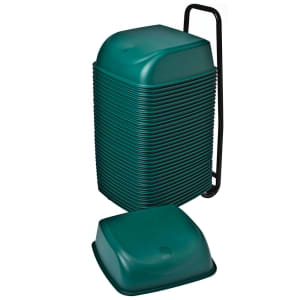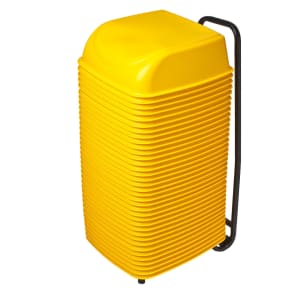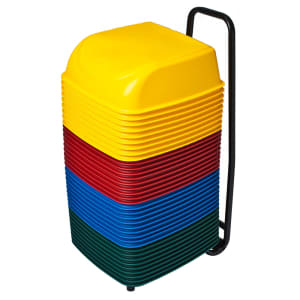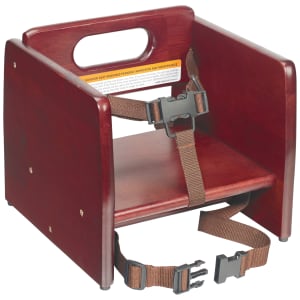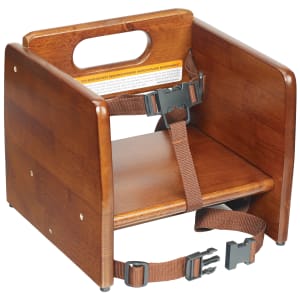Restaurant Booster Seats
Restaurant booster seats provide a table spot for young guests who aren't big enough to sit in a standard chair or booth. Useful for cinemas, pizza parlors, beauty salons, daycares, and preschools, dual-height booster seats can support children as young as 18 months or as old as five years. More
Dual-height Booster Seats: What You Need to Know
Reversible booster seats with dual height options provide a customized lift level for children of different ages. At locations frequented by families with children as young as 18 to 24 months, this type of booster seat provides seating for a range of ages without purchasing two different models.
Common Questions About Restaurant Booster Seats
Where are restaurant booster seats needed?
Commercial booster seats are useful at all kinds of family-friendly establishments. At restaurants, cafes, and delis, boosters can be added to booths or strapped to chairs, lifting young children within comfortable reach of the table top. At movie theaters, commercial booster seats raise children so they can see over the rows in front of them, and at beauty salons, boosters make hair cutting more comfortable for the stylist by lifting children to an accessible height.
What kind of restaurant booster seats are there?
Restaurant booster seats come in many styles and finishes, from natural wood hues to bright primary colors. With several styles available, operators can select a model to fulfill any application and enhance any decor.
- Wooden booster seats add a classic, upscale look to establishments. Typically designed with dual straps, these seats can be strapped to a chair to prevent movement, and they provide a lap belt to secure children in place. Wooden booster seats can enhance the appearance of sit-down restaurants and upscale dining establishments.
- Plastic booster seats can be made with or without straps for a variety of applications. Durable against chips, scratches, and breakage, plastic seats are good for rough-and-tumble use in high-volume locations. Available in bold colors, plastic booster seats brighten up the surroundings at schools and daycares.
- Stackable models save storage space, so they're great for locations needing large numbers of booster seats for frequent visits from young patrons. Venues such as pizza parlors and arcades may want to invest in a stackable style.
- Single-height seats aren't reversible and provide one level of height adjustment. Some single-height models are designed for specific applications and can cost less when securing many booster seats for child-facing applications. Single-height models can be useful for large venues such as movie theaters.
- Dual-height booster seats are reversible and provide dual-height adjustment options, suiting them for children from a few months to a few years of age. These reversible booster seats can be good for locations such as quick-serve restaurants, where children of all ages will be present.
What are the age and weight requirements for a restaurant-style booster seat?
Restaurant-style booster seats come in a few different styles. Dual-height booster seats can be reversed to adjust the lift height for large or small children, while seats with straps keep young diners secured in place to prevent fall injuries.
Generally speaking, a child can sit in a restaurant booster chair when they can sit up by themselves without assistance. This type of development varies from child to child but typically occurs between 18 to 24 months. For children who can't sit up unassisted, a highchair is a better choice than a booster seat.
Older children should stop using a booster seat when they're tall enough to reach the table on their own, or when their weight exceeds to maximum limit for the specific booster seat model. For most children, this is around five years of age.
Height and weight recommendations can vary widely between different booster seat models, so it's important always to read the seat's warning labels carefully and check the literature supplied with the booster seat for specific limits.
Why should I buy restaurant booster seats?
Furnishing plastic or wooden booster seats at any kid-friendly establishments provides a more enjoyable experience for the whole family, increasing the likelihood of a return visit. Some plastic booster seats even feature built-in snack and cup holders, reducing messes as young children consume candy, chips, popcorn, milk, and soda.
Enhancing the health and safety of young guests during their visit not only encourages families to frequent the establishment – it also helps prevent accidents and reduce liability related to inaccessibility issues. CPSC highchair and booster seat regulations are updated regularly, so it's important to stay abreast of changing requirements and replace older booster seat models that no longer meet these guidelines. Furthermore, staff should regularly inspect restaurant booster seats and highchairs for damage such as cracks, breakage, frayed or broken straps, and loose hardware. Any booster with signs of damage should be repaired or replaced immediately to avoid accidental injury to young guests.
Is a highchair or restaurant booster chair better?
Restaurant booster seats and high chairs are designed for different applications. Highchairs are useful for very young children who can't sit up and support themselves unassisted, while booster seats are for older children capable of staying upright without assistance. Both seat types should be kept on hand at child-friendly establishments where families with young children are served.

